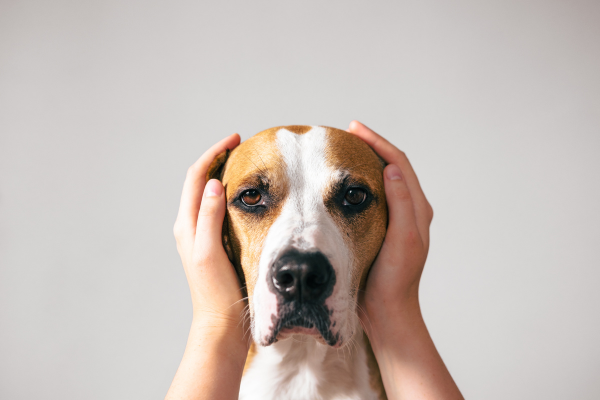Is Your Dog Ruining Your Love Life? Understanding and Managing Your Dog’s Behavior
Does your dog bark, jump up, or hump your leg when you embrace friends, family members, or your partner? When you lock them out of the bedroom, do they whine and bark and scratch at the door? Nothing ruins the mood quite like a heartbroken, crying dog. Is your dog a creepy voyeur, just staring and panting?
The Pandemic Effect on Dog Behavior
This could be one more lingering effect of the pandemic. Many dogs became quite clingy during the quarantine when we had extended time home with them. And if you don’t have many people in your home (especially those you might get cozy with), your dog may be a little bewildered and anxious when they witness affectionate behavior.
Understanding Your Dog’s Reactions
Stranger Danger
If your dog has not received adequate exposure and socialization (most dogs didn’t during Covid), they may be suspicious of people in general. A suspicious dog may bark, jump up, pull at pants legs and even nip or bite!
The Peacemaker
Some dogs are “splitters.” They will physically place themselves between individuals they perceive to be in dispute to diffuse potential escalations.
The Fun Police
Your dog may think hugging, kissing, and squeezing are weird and want that nonsense to stop. When things get whacky, your dog can’t help but bring some order to the chaos.
Dogs Just Want to Have Fun
Perhaps your dog noticed something exciting was happening, and they wanted to participate. They may join in by barking and jumping up. Some dogs will get grabby or humpy, which is strictly nonsexual and doesn’t indicate dominance.
Steps to Manage Your Dog’s Behavior
- Meet your dog’s needs: Add mental stimulation, small positive training routines, walks, and social time.
- Use long-lasting treats: Kongs filled with frozen treats can keep your dog occupied.
- Teach your dog to handle being alone: Slowly condition your dog to being away from you while you’re home.
- Teach your dog to “place”: Train your dog to lie quietly on a mat or bed until released.
- Understand stress signs: Learn to recognize your dog’s nuanced signs of stress.
- Use counter-conditioning: Teach your dog to remain relaxed in the presence of affectionate behavior.
Changing Your Dog’s Behavior
Start by having your partner place their arm lightly on your shoulder while you toss treats on the ground. Progress gradually in small steps to a real hug, and continue delivering those treats. If your dog reacts at any time, you’re moving too fast with the process and you’ll need to stop and take a few steps back.
A Note About Safety
This blog post should not be used as a substitute for professional dog training or behavior consulting. If your dog displays aggressive behavior, contact a professional for an assessment and appropriate behavior modification program.






